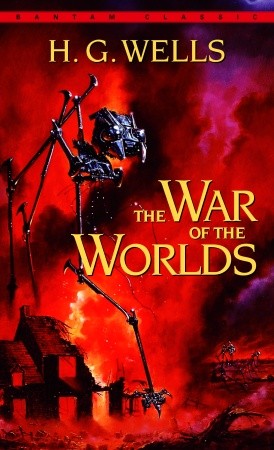ASTRONOMY 1210, SECTION 1

INTRODUCTION TO THE
SKY
AND THE SOLAR SYSTEM

Contact Information
Instructor: Robert W. O'Connell- Office: 251B Astronomy Building (530 McCormick Rd)
- Office hours: M,W 4-5; T 2-3; or by appointment.
- Phone: 924-7494
- Email: rwo
- Class schedule code: 10444
- Office: 106 Astronomy Building (530 McCormick Rd)
- Office hours by appointment
- Phone: 924-7494
- Email: nwt2de
Texts and Supplements
Texts are available at the University Bookstore.- The Cosmic Perspective , by Bennett, Donahue, Schneider, & Voit [Sixth Edition].
- iClickers: we will be using the iClicker electronic response system during lectures this semester. New copies of the Bennett textbook include a $10 coupon toward the purchase of an iClicker. The current version is the iClicker2. If you already have an iClicker1 unit, that will suffice for this class, but the iClicker2 will be more useful for other courses at UVa.
- War of the Worlds, by H. G. Wells. (Science fiction novel.) If you prefer electrons to ink, you can find a digital version of this book here.
- Special materials will be posted on the course home page. These include study guides, which cover all the material discussed in lectures, and a short set of supplementary notes which will substitute for some of the reading in Chapters 5 and 6 in the text,
- The MasteringAstronomy website (www.masteringastronomy.com) contains a large amount of good supplementary information, including interactive tutorials, all of which is keyed to the presentation in the textbook. If you purchase a new text, you will receive a free subscription to the site; if you purchase a used text, you must buy your own subscription. You will not be required to use this site during the course, but it may be helpful in understanding or reviewing the material.
Web Pages
-
Course Home Page: The home page for this course is located at
https://rwoconne.github.io/rwoclass/astr1210/index.html.
This is a public site that contains the syllabus, schedule,
announcements, study guides, supplementary notes, exam
reviews, Weblinks, and observing weather information. If you have a
question, this is where you should look first.
Class Collab Page: The Collab page for this class will be
used to post interim and final grades and perhaps other resources.
This is a secure site, and you will need your UVa login and Eservices
password to access it. (But please note that the main course homepage is
not on Collab.)
Astronomy Department Home
Page: The Astronomy Department home page contains general
information on courses, out-of-class activities for this course, and
useful links to other sources of astronomical information. You can
find the page at:
http://astronomy.as.virginia.edu/.
Schedule
-
Click here for the lecture schedule,
dates of exams, and other important deadlines.
Lectures
-
Lectures are given MW 2:00-3:15 pm in Clark 107.
Each study guide contains notes,
illustrations, and links covering the material discussed in one
lecture. Study guides will be posted to the course home page prior to
a given lecture.
-
Most guides are in HTML format for fast and easy retrieval over the
Web. To take full advantage of them, you should print out a hardcopy
of each guide before the lecture, bring it to class with
you, and annotate it during the lecture.
Grading and Course Credit
-
Your final grade will be
determined from a curved grading system with a 1000
point maximum possible score.
The grading curve I aim for is the
following: A(25%), B(35%), C(30%), D/F(10%).
The assignment of letter grades will be adjusted according to the
performance of this particular class. However, the following minimum
point cut-offs are guaranteed: 930 points = A-; 830 points =
B-; 700 points = C-. These cut-offs may be moved lower if the class
overall does not perform as well as expected, but they will not be
increased.
- Examinations: There will be two midterm exams and the final. The two midterms will each be worth a maximum of 285 points. The final will be worth 325 points. The three exams are therefore worth a maximum possible 895 points. All exams will be primarily objective, with roughly equal weight on the reading and the lectures. The final will be cumulative but will emphasize material from the last half of the course. For those interested, there will be a review for each exam given outside of regular class time.
- "Puzzlahs": These are brief,
in-class questions or exercises which you can do in consultation with
other students. A correct answer is worth 2 points; a wrong answer is
worth 1 point. This means that you will receive some credit for
simply attending class. There will be several Puzzlahs offered in each
class. You will
need to use your iClicker to answer Puzzlahs.
-
Puzzlah credit is recorded as follows: the first 80 points
are awarded to you in the same way as examination credit. Points
over the first 80 are awarded as "extra credit" at half
value. So, if you answer, say, 50 Puzzlah questions correctly,
you will receive 90 points of credit toward your final grade.
This modest in-class credit is intended to encourage you, but not
compel you, to attend lectures.
Puzzlah scores will be recorded electronically. In order that your
iClicker scores are properly assigned, you must first register
it. Click
here for instructions.
- Constellation Quiz: All students
are expected to take a nighttime constellation quiz, in which they
will be guided by a TA in learning the constellations and becoming
familiar with the night sky. A brief introduction will be given in
class. The quiz is worth a maximum of 25 points.
-
Full details on the quizzes are given at the Student Lab
Information site.
The quizzes will be given at the Student
Observatory (outside the Astronomy Building) Monday through
Thursday nights. You can complete the quiz in one
evening. The last night for the Quiz is Tuesday, April 29.
There are two quiz sessions each clear night, beginning at 9 PM and 10
PM, respectively. You must be present at the start of your session.
Because space is limited for each session, you must register
for the quiz in advance using
an on-line
sign-up page.
There will be no observing on cloudy nights. Nights within one week of
New Moon (the darkest sky) are best---see the Sky
Events listed on the course schedule. A telephone recording
giving the status of the Observatory (open/closed, likely observing
conditions, etc.) is available by calling 924-7238 after 7 PM
each night. You can also check the weather
forecasts and maps on the Web. Please note: weather is
unreliable. You should do your best to complete the quiz as early in
the semester as possible.
- Extra Credit: By doing the following optional assignments, you can obtain extra course credit. This can be used, for instance, to offset a low exam score or to substitute for some Puzzlah credit. A maximum of 60 points can be earned this way. You can do any or all of the optional assignments (each worth a maximum of 20 points). Assignments submitted after Friday, April 11 will be worth a maximum of only 10 points each. The deadline for submission of extra credit work is Friday, April 25.
- Telescope Observing. Here you will make and record observations of several different astronomical objects using the historic 26-in refractor and two smaller telescopes at McCormick Observatory. You must meet the TA guides in the parking lot outside the Astronomy Building at 9 PM sharp. Bring a car if you have one. Telescope observing will be held only on Monday and Thursday nights, and, again, you must register in advance. See the Student Lab Information site for details. Instructions and worksheets will be provided by the TA's, who will also collect worksheets. No observing on cloudy nights; call the 924-7238 recording after 7 PM for information on that night's session.
- The Orbit of Mars. Here you will use Kepler's actual data to determine the shape and size of the orbit of Mars, a re-creation of a classical investigation which changed the course of science. Instructions are at the Student Lab Information site. Requires about 3 hours and involves high-school level math.
- Revolution of the Moons of Jupiter. Here you will use the motions of Jupiter's satellites to determine the mass of Jupiter. You make simulated "observations" of the four bright satellites using a computer program. Requires about 3 hours of time, and involves high-school level math. You can use your own computer or an ITC computer to do the lab after downloading the instructions and answer sheet (2 separate items) from the Student Lab Information site.
Course Level and Pre-requisites
-
This course satisfies 3 hours of the College Natural Sciences Area
Requirement. It is primarily a
descriptive and qualitative introduction to astronomy designed
for liberal arts students. There are no pre-requisites. No prior
exposure to college-level science or math is assumed, and you will not
be expected to understand the subject mathematically. You will,
however, be asked to place your understanding of the subject in a
quantitative perspective. For instance, you should be familiar
with the relative sizes and evolutionary timescales of the various
objects we discuss in the solar system.
Independent Work
-
Except for the Puzzlahs, collaboration of any kind on any submitted
work in this course is expressly forbidden. All work must be pledged,
and your pledge will be taken to signify a completely independent
effort. The only help you should seek should be from me or the
TA's.
 Back to the ASTR 1210, Sec. 1 Home
Page
Back to the ASTR 1210, Sec. 1 Home
Page